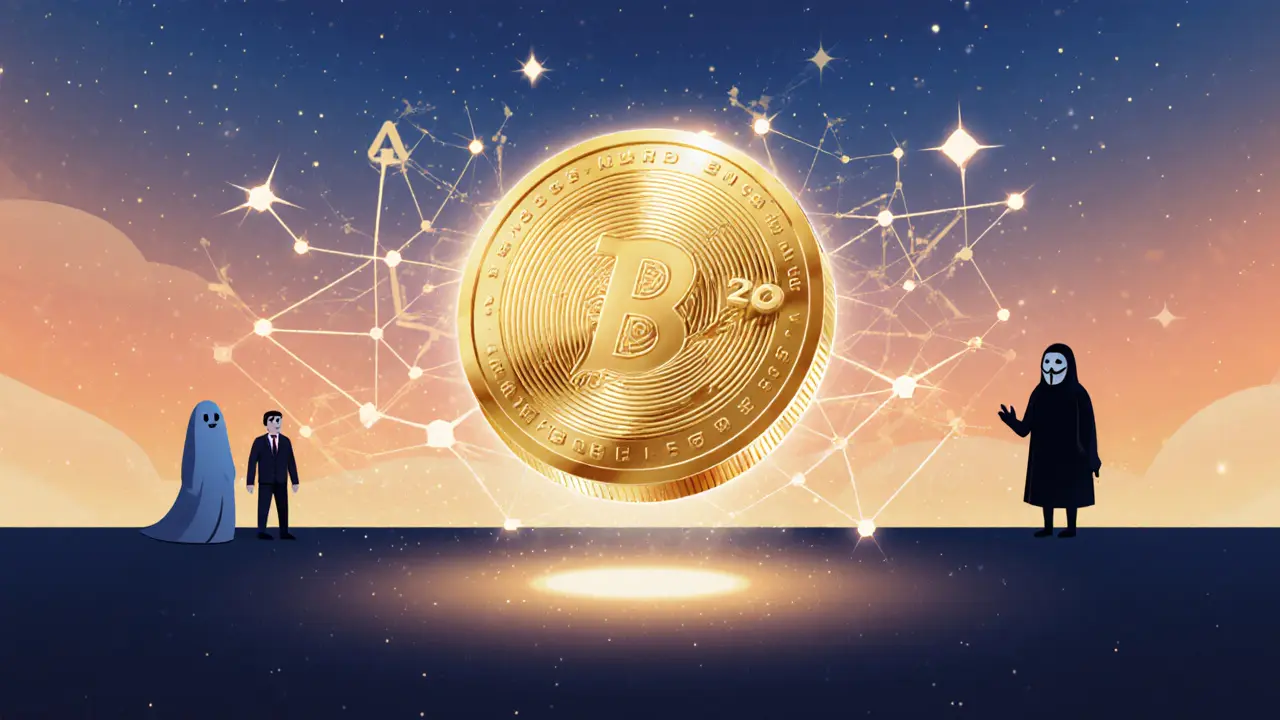Banus.Finance (BANUS) Crypto Coin Explained - Risks, Tokenomics & DEX Overview

Sep, 21 2025
When you see a new crypto name pop up, the first question is usually: *what is it really?* Banus.Finance is one of those obscure projects that promises a decentralized exchange and a native utility token, but the details are far from clear. This guide breaks down the token’s design, the platform’s mechanics, real‑world market data, and the red flags you should watch before spending a single cent.
What is Banus.Finance?
Banus.Finance (BANUS) is a dual‑component cryptocurrency project that launched in 2023 on the BNB Smart Chain ecosystem. The project offers a non‑custodial decentralized exchange (DEX) and a BEP‑20 utility token called BANUS. The development team remains anonymous, a common trait in many DeFi ventures, which makes independent verification difficult.
Tokenomics of the BANUS Token
BANUS token is a BEP‑20 asset with a fixed total supply of 500,000,000 tokens. Official sources claim zero tokens are in circulation, a claim that contradicts typical token‑omics models and raises questions about how the distribution actually works. Market‑cap calculations from CoinCodex (September 2025) use this total supply to estimate a market cap of roughly $66,500, but real‑world liquidity is minuscule.
Key token metrics (as of September 2025):
- Current price: $0.00013884 (CoinGecko), $0.00006883 (CoinMarketCap), $0.00019000 € (Kriptomat)
- 24‑hour trading volume: $31.47
- Volatility (14‑day): 11.34 %
- 50‑day SMA: $0.000152; 200‑day SMA: $0.000164
- RSI (14‑day): 46.46 (neutral)
How the DEX Works
Decentralized exchange (DEX) on Banus.Finance lets users trade spot or perpetual contracts for BTC, ETH, AVAX and other major assets with up to 100× leverage. Trades are executed directly from the user’s wallet-no account creation required-on the Arbitrum and Avalanche networks.
Arbitrum and Avalanche serve as the layer‑2 execution layers. Because the platform is non‑custodial, users keep full control over private keys, but they also bear all gas fees and slippage risks.
Market Performance & Price Data
Price data for BANUS is wildly inconsistent across aggregators. CoinGecko lists $0.00013884, while CoinMarketCap shows $0.00006883, a gap of more than 100 %. Such disparity is far beyond the 0.5 % variance typical of reputable tokens. The token trades on only 16 markets, and the total 24‑hour volume sits at $31.47-far below the $10,000 minimum often cited as a baseline for legitimate liquidity.
Recent price movement (Sept 23 2025): down 0.8 % in the last hour, down 4.2 % over the previous day. The Fear & Greed Index reads 70 (Greed) despite bearish price action, hinting at possible speculative pushes rather than organic demand.
Risks and Red Flags
Multiple independent analyses label BANUS a high‑risk token. The most glaring issues are:
- Zero reported circulating supply while tokens trade on exchanges-often a sign of data errors or manipulation.
- Extremely low liquidity ($31.47 24‑hour volume) makes price discovery unreliable and slippage extreme.
- Lack of transparent team information; the developers are anonymous.
- No audited smart‑contract code-security audits are a standard requirement for DeFi projects.
- Scarce community support-Telegram has 87 members, Trustpilot averages 1.4/5 stars, and Reddit mentions are fewer than five in the last three months.
Regulatory concerns also exist. The SEC’s 2025 guidance flags tokens with unclear utility and opaque distribution as potential unregistered securities under the Howey Test. Given BANUS’s vague governance role, it could fall into that category.
How to Acquire BANUS (If You Still Want To)
The only practical way to obtain BANUS today is through a manual contract addition on a wallet that supports BNB Smart Chain (e.g., Trust Wallet or MetaMask). Binance’s guide outlines a seven‑step process:
- Install Trust Wallet and back up the seed phrase.
- Buy BNB on a centralized exchange.
- Transfer BNB to your Trust Wallet.
- Open the DEX interface on Banus.Finance.
- Add the BANUS contract address manually (0x… placeholder).
- Set a high slippage tolerance (often >10 % due to low liquidity).
- Confirm the swap and pay gas fees on Arbitrum or Avalanche.
Even with these steps, users report failed transactions, excessive gas costs, and “transaction not found” errors in >80 % of attempts. The learning curve is rated “Expert” by Binance Academy.
Comparison with Major DEX Platforms
| Metric | BANUS (Banus.Finance) | PancakeSwap (CAKE) | Uniswap (UNI) |
|---|---|---|---|
| Total Supply | 500 M | 150 M | 1 B |
| 24‑h Volume (USD) | 31.47 | 1.2 B | 950 M |
| Liquidity Pools | 16 active markets | >1,200 markets | >1,500 markets |
| Price Consistency (max % diff across exchanges) | ≈150 % | ≈0.4 % | ≈0.5 % |
| Community Size (Telegram) | 87 members | ≈450 k members | ≈620 k members |
The table makes it clear: BANUS operates on a fraction of the volume, liquidity, and community size of established DEX tokens. Its price volatility and inconsistency are also far outside normal ranges.
Bottom Line - Should You Consider BANUS?
If you enjoy high‑risk speculation and have a solid understanding of DeFi mechanics, you could treat BANUS as a research‑only token. For most investors, the combination of zero transparent supply, negligible liquidity, and an anonymous development team makes it a poor candidate for any meaningful allocation. The project is listed among “zombie tokens” by Delphi Digital, and survival models predict an 87 % chance of liquidity disappearing within six months.
In short, the odds are heavily stacked against success. Treat it like a cautionary tale of how not to evaluate a crypto project-focus on clear tokenomics, audited code, active community, and real liquidity before committing funds.
What blockchain does BANUS run on?
BANUS is a BEP‑20 token that lives on the BNB Smart Chain. Transactions are executed on the Arbitrum and Avalanche layer‑2 networks.

Why is the circulating supply shown as zero?
The zero figure appears to be a reporting error or a deliberate obfuscation. In practice, tokens are being swapped on DEXs, which implies some supply must be in wallets, but the data feeds have not been updated correctly.
Is Banus.Finance a regulated platform?
No regulator has approved the platform. Given its anonymous team and unclear token utility, it could be viewed as an unregistered security under the SEC’s 2025 guidance.
How can I actually buy BANUS?
You need a BNB Smart Chain‑compatible wallet (e.g., Trust Wallet), purchase BNB, then manually add the BANUS contract address on a DEX aggregator that lists the token. Expect high slippage and possible failed transactions due to low liquidity.
Is it worth investing in BANUS?
For most investors, the answer is no. The token’s high risk, poor liquidity, and lack of transparency outweigh any speculative upside.